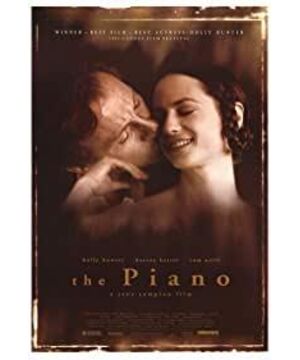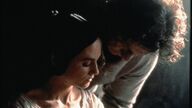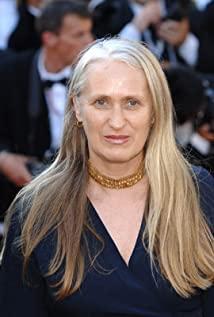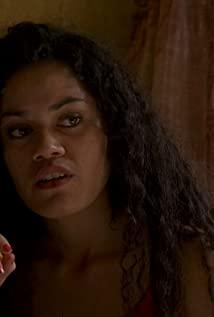Feminist film theory originated in the 1960s and is a school of film theory that integrates theories and methods of psychoanalysis, post-structuralism, and semiotics. The foundation of this theoretical theory is British feminist film theorist Laura Mulvey's paper "The Pleasure of Watching and Narrative Film". In this article, Mulvey takes women's living conditions/discourse structure power as the starting point of criticism, and Lacan's psychoanalytic theory as the radius of inquiry, forming a female vision consciousness that incorporates gender studies in various arts and humanities. shape space. From this dimension, the masterpiece "Piano Lesson" by the famous New Zealand director Jane Campion has become an absolute feminist criticism with its inner experience from a female perspective and a unique narrative that is fundamentally different from mainstream Hollywood male-dominant discourse. nice text.
1. A subversive reorganization of the pleasure of watching movies in mainstream images
Laura Mulvey poignantly points out in the article "The Pleasure of Watching in Narrative Films":
The decisive male gaze casts his fantasies on the female form stylized in this way. Women are seen and displayed simultaneously in their traditionally naked roles, and their appearance is coded into images with a strong visual erotic impact, thus having the connotation of being seen. The women presented as objects of sexual desire are the main theme of the erotic spectacle: from the beauties on the walls to the strippers, from the Siegfried cabaret girls to the Bosby Berkeley cabaret girls, they bear the sight, And cater to the desires that refer to men. Mainstream cinema organically combines spectacle and narrative.
In short, Mulvey argues that mainstream commercial films don't win applause from audiences with smooth editing continuity, flawless scripting, or nuanced performances. The inner mystery of mainstream commercial films is that they satisfy some hidden inner desires of the audience. That is, the audience directly voyeuristically looks at the female form displayed for their enjoyment; the audience is fascinated by the male image of the same kind in the illusion of natural space, and through this male controls the possession of the women in the story world. In addition, successful mainstream commercial films will use the overlapping of the two image narrative mechanisms to hide this dominant physiological desire factor to the greatest extent. Therefore, mainstream movies usually split and derive two image sequences. One is the narrative image sequence. This sequence focuses on the continuity of the plot and the actions and adventures of male heroes, and is manifested as an obvious continuous montage in film techniques. And three-dimensional central perspective space, that is, the pursuit of space-time continuity and the depth of screen space, thus providing a stage for male heroes to gallop on adventure; the second is a spectacle video sequence, which shows the body parts (such as legs) of beautiful and magical female figures. In order to achieve the spectacle of modeling, the film techniques are mostly flat and close-up shots. The female body cut for the close-up is exaggerated to some kind of alien image and becomes the object of the aesthetic viewer or desire to watch. Teacher Dai Jinhua also pointed out that "the internal narrative mechanism of mainstream commercial films induces the audience to identify with the male protagonist's sight, and through his sight gives the female protagonist a lustful and erotic viewing. Therefore, in mainstream commercial films, female images only serve as spectacles. , visual motives that induce desire to watch.”
When we examine Jane Campion's "Piano Lesson" from the perspective of mainstream commercial films, we find that it completely and unreservedly touches the inverse scale of the conventional narrative design of mainstream films. From the aspect of film scene scheduling, Jane Campion reconstructs the interactive combination of narrative sequence and spectacle sequence with subversive viewpoint selection. Throughout the film, women no longer act as a structural plate in the spectacle image sequence to stimulate the audience's nerves, but are incorporated into the narrative image sequence to exist as the subject of action. At the same time, the power structure of male and female discourse and the relationship between watching and being watched are completely reorganized. In the classic Hollywood period, Greta Garbo and Marilyn Monroe, as sexy stunners, were always viewed as viewing points in the movie for the audience to enjoy and watch to form a visual spectacle. In "Piano Lesson", we can be surprised to find that the audience in the video has changed from female to male and the macro environment. As far as the male spectacle is concerned, the most direct and valid evidence is that the neighbor Bein is alone in the house after piano lessons, unclothed and naked, slowly wiping the piano. The behavior can be extended to Bein's spiritual caressing love or desire for Ada's body), because it is included in the category of spectacle video sequences; and even in narrative video sequences, women mostly occupy the main position , When Ada was teaching piano lessons at Bein's house, Bein disappeared from Ada's back, the camera followed Ada's perspective to find Bein, and at the next moment the camera suddenly hit back, and Bein suddenly appeared naked in the image of Ada and Ada. In front of the audience, the audience and Ada share an isomorphic shock experience to some extent. In the power discourse structure contained in this scene, the strong and weak relationship between men and women is reversed. The audience rarely examines and watches men from the perspective of women, and the naked body of men turns into a spectacle of modeling on the screen. In terms of the macro environment, Jane Campion sets the background in Rotorua, New Zealand, located on the North Island, which is the birthplace and main gathering area of the indigenous Maori people in New Zealand, and is famous for its rich tropical rainforest landscape. Jane Campion embeds the rich and magical natural landscapes and primitive and ancient mysteries into feminist narratives, adding a more exotic texture to the film's spectacle image sequence.
Overall, Jane Campion makes an emerging variation of the established image sequences of mainstream commercial films, incorporating the overall scene environment into a spectacle narrative, and in some passages elevating women to the status of the viewer. From this point of view, the referent of the narrative mechanism of film images is reframed in Jane Campion's creative variation. The boundary between narrative video sequences and spectacle video sequences is no longer roughly and mechanically divided by gender differences, and the macro environment, originally the deep space contained in narrative video sequences, has been incorporated into the spectacle video sequences to some extent. . Jane Campion is also the referent who reshapes the narrative mechanism of mainstream commercial films in these two senses. Therefore, narrative and spectacle achieve a symbiotic gesture of mutual inclusion and integration in "Piano Lesson", which is different from mainstream commercial films. The two-phase split form of the single pendulum of the film is also recognized by the Cannes Film Festival, the highest hall of art cinema. It also provides a model of practical creation for later feminist films.
2. Rebellion against the simplistic female image of "angel"/"temptress"
The discussion of "angels" and "witches" originated from the feminist masterpiece "The Mad Woman in the Attic" by feminist literary theorists Sandra Gilbert and Susan Guba. It studies two unreal female images in the western male literature before the 19th century—angels and temptresses, and reveals the distortion and repression of women in the male patriarchal society hidden behind these images. In the view of feminist critics, the portrayal of women in traditional literary works, especially the works of male writers, is mostly a false image, which reflects the gender prejudice of male writers and the desire to place women in a subordinate position. The "angel" type of women reflects the ideal aesthetics of men for women, and the expectation and fantasy of the patriarchal cultural mechanism for the image of women. The "demon woman" type of women originates from men's inner anxiety about women, and is the externalization of men's inner disgust and fear in women's challenge to men's power.
In the paper "The Pleasure of Watching Movies and Narrative Films", Laura Mulvey made the following expositions on how mainstream commercial films resolve the tension and contradictions inherent in patriarchal culture:
Women as images are presented for viewing and enjoyment by the male-active viewer, who always threatens to arouse the anxiety she originally referred to. The male unconscious has two ways of escaping this castration complex: by focusing on re-enacting her original trauma (investigating the woman, deciphering her mystique), and by making amends by devaluing, punishing, or saving the guilty object (this way). Typically expressed in the concerns of film noir).
In the book "Film Criticism", Mr. Dai Jinhua described this process with a very clear expression: "The dilemma of men is how to eliminate women's dual role functions as the object of men's desire and the source of anxiety. Set a male character who overcomes fear and heals sickness. Through the peeping and tracking of the male protagonist, a woman full of temptation, mystery and threat is reduced to some kind of deception and crime. In the end, the women were punished through the hands of the male protagonist. The love and protection of men were used to praise good women, and imprisonment and exile were used to punish bad women, so as to dissolve the inner tension and contradiction in the patriarchal culture. Mainstream commercial films take this as a logical basis, and strengthen the patriarchal/patriarchal structure by "demonizing" female images ("Vertigo" and "007" are all examples), giving the male subject imaginative satisfaction and comfort.
And "Piano Lesson", as an outstanding female film created by a female director, obviously will not have the isolated and separated single-dimensional female role of "angel/temptress". Ada is undoubtedly a complex female character who combines ideal and worldliness, good and evil, loyalty and debauchery. Jane Campion brings out the ambiguity of Ada's life with an unconventional plot. Looking at its underlying logic, "Piano Lesson" essentially tells the story of a woman's derailment. In the narratological logic of mainstream commercial films, derailed women are obviously included in the category of "temptresses", and they exist as female images externalized by men's anxiety about the phenomenon of Hong Xing's cheating in marriage. But Jane Campion transferred this "demonized" female characteristic to "Piano Lesson", and finally justified its name through a series of narrative techniques. First of all, the marriage between Ada and Stewart is essentially a family arrangement, a result of the exchange of economic interests and the marriage under the patriarchal power system. Ada’s derailment is endowed with the inherent resistance to the patriarchal/patriarchal society in a macro sense. meaning. Furthermore, the love between Ada and Bein originates from the resonance on the soul level of each other. Bein, as a Maori, has a primitive and wild male rude charm that deeply attracts Ada, while Ada's artistic coldness and purity The inhumane temperament also seduces Bein. Jane Campion is well aware that there is a certain isomorphic mysterious and unknowable commonality between the primitive and uncivilized state of mind and the most pure art, so the sound of the piano played by Ada's fingertips is in Bein's future. There was an indescribable soul resonance in Kaihua's heart. It is precisely this dual plot setting of macro-society and micro-inner that dispels the stigmatized description of "derailed women" in mainstream commercial films (temptresses), and makes Ada's choice of "derailment" a rebellious patriarchy/male. The dual inner meaning of the right discourse system and the restoration of free will. But more than that, female writers/directors tend to repeat the same mistakes as male writers when writing feminist texts - setting the male in the text as an extreme and unreal subconscious projection, or segmenting it equally into Distorted one-dimensional characters (similar to angels/temptresses), this is undoubtedly a creative practice psychology with revenge in the subconscious. This will keep patriarchal/patriarchal narratives and feminist narratives at the extremes of the spectral sequence forever and fail to form a harmonious and symbiotic generalist fusion. However, Jane Campion obviously broke out of this vicious circle of reincarnation and gave the men in the film the same degree of respect and flesh and blood, so that men can also achieve a variety of flowing interactive charms in the video world. The classic example is Stewart, who, as Ida's legal partner/husband, has a series of shortcomings of machismo and irritability (
All in all, Jane Campion did not fall into the endless struggle of mutual devaluation between patriarchal/patriarchal narratives and feminist narratives, but instead created complex and ambiguous real three-dimensional characters with a fairly candid and equal attitude. All characters present a dynamic charm of interactive flow in the video world, rather than stereotyped flat characters. Even today, more than 20 years later, the men in many women's films are still set as single logical characters who are irritable, irritable, and macho. There is no complex ambiguity rooted in real society. It is precisely because of Jane Campion's portrayal of women's multidimensional life meaning and equal respect for male characters that she has become a world-renowned representative director of feminist films.
3. Interpretation of the ideographic system (aphasia, piano, deep sea)
The previous article described the variation of the internal image mechanism and narrative mechanism of "Piano Lesson" as a feminist film, but did not analyze and discuss the ideographic system of the entire film. If you look closely, it is not difficult to find that there are quite a lot of ideographic symbols in "Piano Lesson". The ideographic system laid out by these symbols is organically connected with the internal image and narrative mechanism of the film, making the film buried contains more for excavation. Polysemy interpretation.
In "Piano Lesson", the heroine Ada has been in a state of "aphasia" since childhood. Obviously, this does not refer to the phenomenon of physiological clinical syndromes, but refers to a kind of spiritual free choice, or to a certain Rebel confrontation with grand reality. Ada's "aphasia" is obviously symbolized as a silent struggle against the patriarchal/patriarchal system in the comparison of the context before and after the film. It is known from the title that Ada has never spoken since she was six years old, and it is known from her daughter that she had had a marriage before Stewart and gave birth to a daughter, but Ada was still in a seemingly happy marriage. Without speaking, there is reason to speculate that Ada's first marriage is still the product of a patriarchal family arrangement. It was not until the end that Ada followed her own will and chose Bein, that she gradually learned to pronounce words. It was only then that the oppression of patriarchal power was removed and Ada's free will was restored. "Aphasia" also symbolizes Ada's life state in which she was enslaved by the patriarchal power structure and withered free will in the first half of her life. The "qin sound" symbolizes another "metaphysical" language or "spiritual language" other than Aida's mother tongue. Therefore, the signifier and signified of "piano" are logically reconstructed in "Piano Lesson". It essentially acts as Ada's "mouth/mouth" for vocalization. Therefore, "discourse" has become an absent presence in "Piano Lesson". Although Ada is in a state of aphasia, she conveys her feelings through the sound of the piano all the time. The absence of the figurative is transformed into the abstract presence, which exists in the field space of the video world as the spiritual language of the inner space of the film. In other words, not only the sound of the piano is the externalization of Ada's psychological trajectory, but the soundtrack of the entire film can also be used as a narrative carrier for Ada's emotional transformation. At the end, when Ada followed her own will and chose Bein, she sank the piano into the deep sea without hesitation. She had already walked away from the barrier of patriarchal power oppression and nirvana from the dead free will, and the piano was no longer her expression. The carrier (mouth/mouth), she gained the power to speak freely and loudly. The signifier and signified of the piano did not return to its original meaning until the moment when the piano sank into the sea. And "deep sea" undoubtedly carries the symbolic expression of life/death in "Piano Lesson". The sea is life, the sea is death, and the sea surface turns into the dividing line between life and death. From the perspective of psychoanalysis, the deep blue sea has the symbolic meaning of "mother's womb". According to Freud's expression, the desire of adults to return to their mother's womb is actually a "Nirvana"-style life and death instinct. Therefore, Ida deliberately fell into the sea at the end, symbolizing her nirvana and new life as a female individual.
"Piano Lesson" isn't a radical feminist film, it's just an epic of the personal life of Ada, a woman who saves herself. Jane Campion's sincere and skillful way of unfolding the free will and respectable side of women like a picture scroll. Ingenious combination of scene spectacles and inner narratives, giving male/female characters rich flesh and blood in an unconventional way, and using multiple ideographic symbols to symbolize and reshape the polysemy of women's lives. Although it is like a drop in the ocean in the face of the vast ocean of male narrative film base, it has left a strong mark in the history of feminist film.
View more about The Piano reviews










